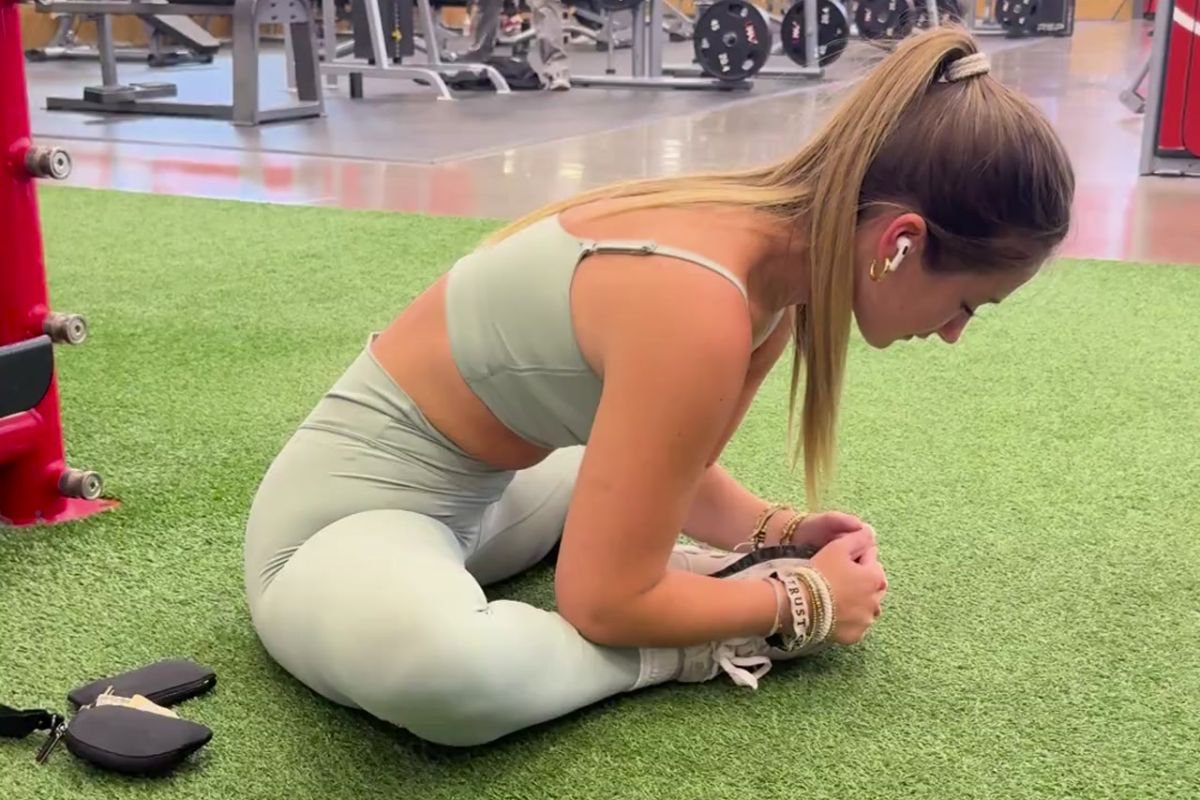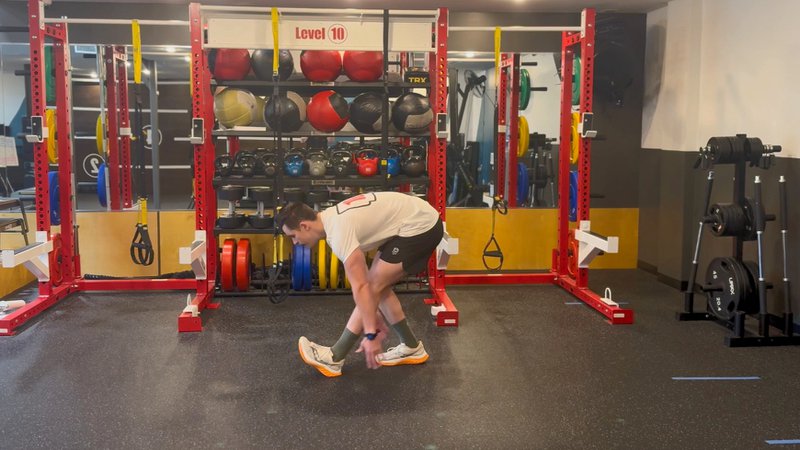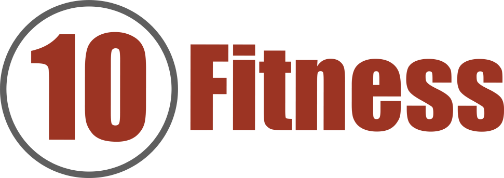
Stretching isn’t just for athletes—it’s for anyone who wants to move more easily and feel better. A solid full-body stretching routine can ease sore muscles, improve mood, and keep one active—without spending money. For those looking to get fit on a budget, knowing the right stretches helps significantly. Here’s what to include and how to stretch safely. Let’s begin!
Key Takeaways:
- Stretch all major areas: neck, shoulders, chest, back, arms, hips, quads, hamstrings, calves, and glutes.
- Use dynamic stretches (like leg swings or arm circles) before workouts to warm up muscles.
- Static stretches (like hamstring reach or quad hold) are best after workouts or at night to recover.
- Good times to stretch: in the morning, after workouts, and at night.
- Hold each stretch 30–60 seconds; stretch at least five times a week for the most benefits.
- Use safe form: no bouncing, notice your limits, and avoid any sharp pain.
- Chair-based stretches are great for seniors. Adjust moves for injury or pain when needed.
- Stretching supports better posture, circulation, and the ability to relax.
- Track progress with reach tests and stretch logs.
- Use free guides (PDFs, videos, apps) to help stay consistent and improve over time.
What Stretches Should Be Included in a Full Body Stretching Routine?
A comprehensive full body stretching routine should target every major area from head to toe and can be completed in just 10 to 15 minutes. This type of routine suits both post-workout recovery and long days at a desk. To enhance mobility and well-being, include the following stretches.
Stretching the Neck and Shoulders in a Full Body Routine
Why stretch the neck and shoulders?
Releasing tension in the neck and shoulders helps alleviate stress from extended periods of sitting or looking down.
- Neck Stretch: Turn your head side to side and gently tilt toward each shoulder. Hold each side for about 30 seconds to keep your shoulders loose.
- Shoulder Rolls: Shrug up and back slowly five times, then roll forward five times. This exercise loosens tightness and aids in maintaining good posture.
Arms and Upper Back Stretches in a Full Body Routine
- Behind-Head Arm Reach: This stretch targets upper arms and shoulders. Touch the middle of your neck from behind with one hand, gently pressing the elbow with your opposite hand. Hold for 20 seconds and switch arms.
Chest and Back Stretches in a Full Body Routine
Key stretches for the chest and back:
Maintaining strong chest and upper back muscles supports posture and balance.
- Doorframe Chest Stretch: Stand in a doorway with your arms bent in a goalpost shape, pressing into the frame and leaning slightly forward. Hold for 30 seconds.
- Child’s Pose: Kneel, reach your hands forward, and sit your hips back toward your heels. This pose stretches the back, shoulders, and hips. Hold for 30 seconds and breathe slowly.
Hips and Lower Body Stretches in a Full Body Routine
For stiffness after prolonged sitting:
- Hip Flexor Stretch: Kneel on one knee and press your hips forward. Keep your back straight and lift one arm overhead to deepen the stretch. Hold for 30 seconds per side.
- Leg Swings: Swing one leg forward and back like a pendulum, performing 20 swings on each leg to warm up hips and thighs. These stretches are excellent before workouts like our full-body routine.
Thighs, Knees, and Hamstrings Stretches in a Full Body Routine
- Quadriceps Stretch: Stand and grab one ankle behind you, keeping your knees together. Hold each side for 30 seconds. Use a chair for balance if needed.
Addressing tight hamstrings:
- Standing Hamstring Stretch: Keep both feet flat and bend toward your toes, holding for 30 seconds.
- Calf Stretch: Press your hands against a wall and step one foot back, placing your heel down and keeping your back leg straight and front knee bent. Hold for 30 seconds.
Glutes Stretch in a Full Body Routine
- Seated Glute Stretch: Sit, cross one ankle over the opposite knee, and hug your bent leg for 30 seconds on each side.
Visual learners might find our stretch chart with exercises and images helpful for maintaining proper form.
This full body stretching routine pairs effectively with workouts to ensure recovery and enhance flexibility. Remember to breathe calmly, hold each pose gently, and stop before experiencing any pain. Repeating tight stretches as needed helps you feel lighter and move with ease.
Best Time to Stretch During the Day with a Full Body Stretching Routine
Timing your stretches purposefully can maximize benefits. Here's how to integrate full body stretching effectively throughout the day.
Morning Full Body Stretching Routine
Enhance Morning Alertness
Morning stretches can boost circulation and wake muscles effectively.
- Advice: Perform stretches right after waking up to energize the body.
- Routine: Include neck rolls, forward folds, and shoulder stretches. This 5-minute morning stretch aids in loosening the spine, hips, and chest. Keep movements gentle and avoid long holds.
Post-Workout Full Body Stretching Routine
Facilitate Recovery After Workouts
Static stretches post-exercise can enhance recovery by relaxing the body.
- Advice: Stretch after workouts to relax muscles and support recovery.
- Routine: With muscles warm, hold deeper stretches for at least 30 seconds. This prevents cramps and eases soreness. Focus on areas like thighs, glutes, or chest, depending on the workout. Consider following a full-body stretching routine for optimal recovery.
Evening Full Body Stretching Routine
Prepare the Body for Rest
Evening stretches quiet the body, aiding relaxation before sleep.
- Advice: Stretch right before bed to calm the nervous system.
- Routine: Use gentle moves like forward folds, child’s pose, and neck stretches. Dimming lights and slowing breath enhances the relaxation effect. Target areas that support calm moods and deep breathing.
Quick Guide to Daily Stretching Routines
- Morning: Engage in gentle stretches to kickstart the day.
- After Exercise: Incorporate longer holds to cool down.
- Before Bed: Utilize quiet, smooth moves for restful sleep.
Each targeted routine supports the body differently throughout the day.
Pros and Cons of Static vs. Dynamic Stretching in a Full Body Routine
Understanding the best techniques can optimize your full body stretching routine. Here's a breakdown of static and dynamic stretching.
Static Stretching in the Full Body Routine
Definition and Benefits
- Static Stretching: Involves holding a stretch. Ideal for calming and lengthening muscles post-workout.
- Suitable For: Post-session routines or cooling down before bed.
Dynamic Stretching in the Full Body Routine
Definition and Benefits
- Dynamic Stretching: Consists of continuous movement, such as leg swings and arm circles.
- Suitable For: Pre-workout to warm up muscles and joints, reducing injury risks.
Timing and Risks
- Dynamic Before Activity: Moves like trunk twists or walking lunges prepare the body, minimizing injury risks.
- Static After Activity: Long-hold stretches lower tension post-exercise.
- Risks: Avoid bouncing in static stretches and over-stretching muscles before sports to prevent reduced strength.
Scientific Insights
- Dynamic Benefits: Studies highlight that dynamic stretches can enhance strength and speed when performed pre-exercise.
- Static Benefits: Daily static stretching improves blood vessel function and posture. Both styles enhance muscle use over time.
Recommendations
Incorporate both dynamic and static stretches into routines, starting with movement and ending with calm holds. Explore 10 Fitness resources for routines tailored to personal needs.

How to Perform a Safe Full Body Stretching Routine Without Equipment
No tools are needed to reap the benefits of stretching. All that's required is your body, some floor space, and a few spare minutes.
Dynamic Stretches to Begin Your Routine
Begin with gentle dynamic stretches to activate muscles:
- Arm Swings: Loosen joints and muscles with 20 reps.
- Shoulder Rolls: Gradually ease tension.
- Easy Lunges: Warm up major muscle groups.
These actions prepare the body for the full routine. Explore our full-body workouts that work well without gear.
Essential Stretches in a Full Body Routine
Incorporate these stretches, each holding for at least 30 seconds:
- Hamstring Stretch: Sit down, straighten one leg and reach toward it.
- Quad Stretch: Stand, bend one knee, and pull the foot toward your glutes.
- Chest Opener: Clasp your hands behind your back and lift gently.
- Upper Back Stretch: Hug a ball shape in front, rounding the back.
- Calf Stretch: Lean into a wall with one leg back, heel down.
- Glute Stretch: Sit, cross one ankle over the other knee, and tilt forward.
- Neck Stretch: Tilt your head gently to each side.
Deep breathing enhances the calming effect. For safe form, ensure lines remain straight and avoid jerking.
Modifications for Full Body Stretching Routine
- Tight Hips or Knees? Modify by bending less or using a chair.
- Consistent daily routines can lead to better motion and less pain over time. No gear is needed for success.
Optimal Duration and Frequency for Full Body Stretching Routine
Each stretch should last 30–60 seconds, allowing muscles to fully relax. Repeat stretches twice if needed.
Weekly Full Body Stretching Plan
- Monday: Focus on upper body
- Tuesday: Focus on lower body
- Wednesday: Full-body mix
- Thursday: Active recovery or light walk
- Friday: Repeat full-body
- Weekend: Yoga or quiet evening stretch
Consistency is key. Stretching five times a week promotes progress and flexibility. Explore our stretching programs for more guidance.
Variations in Full Body Stretching Routine for Age and Fitness Level
Everyone's body has unique responses. Here's how to adjust exercises based on age, gender, and fitness level.
Senior-Friendly Full Body Stretching Routine
Gentle, stable movements are ideal for seniors:
- Seated Stretches: Reach toward an extended leg while sitting tall.
- Small Moves: Shoulder rolls or chin tucks to ease tension.
Daily stretches support motion and reduce joint issues. Learn more.
Gender-Specific Full Body Stretching Tips
- For Men: Focus on hips, hamstrings, and chest. Add stretches targeting these areas to relieve tension from lifting or driving.
- For Women: Prioritize spine, shoulders, and hips. Incorporate backbends, seated twists, and lunges.
These stretches address common areas of tightness.
Stretching with Tight Spots or Injuries
For tightness or past injuries, use a stretch guide for injured bodies:
- Use Props: Support with towels or chairs.
- Focus on Safety: Notice discomfort and modify accordingly.
Consult physical therapy professionals for personalized guidance. Even minor movements can yield significant progress.
For more routines and guidance, check our full-body workout resources.
How Does Full Body Stretching Improve Posture, Circulation, and Mental Clarity?
Stretching enhances posture, circulation, and mental clarity, helping you sit, stand, and move more effectively.
Improving Posture with a Full Body Stretching Routine
Why It Matters
Poor posture can lead to discomfort and long-term health issues. A full body stretching routine targets muscles that become shortened and tight from daily activities.
Key Stretches for Posture
- Chest and Shoulder Stretch: Counteracts desk work by opening tight chest muscles.
- Hip Flexor Stretch: Relieves tension in hips that can cause lower back sway.
Implementing these stretches helps keep the spine aligned and reduces pain associated with poor posture.
Impact on Circulation Through Full Body Stretching
Enhanced Blood Flow
Stretching widens blood vessels, improving circulation and aiding muscle recovery. This is vital for maintaining cardiovascular health.
Routine Suggestions
- Calf Stretch: End the day with stretches for calves, thighs, and the lower spine to optimize blood flow.
- Explore our full-body workout routines to combine stretching with exercises that boost circulation.
Mental Clarity and Relaxation from Full Body Stretching
Stress Reduction
Stretching at a slower pace activates the parasympathetic nervous system, promoting relaxation.
Calming Techniques
- Gentle Forward Folds: Incorporate slow breathing for added relaxation.
- Bedtime Stretches: Such as lying stretches, soothe the mind before sleep.
Embrace the calming effect of a guided stretching routine for enhanced mental clarity.
Can I Follow a Guided Full Body Stretching Plan or Download an Example?
A guided plan helps establish consistency and proper technique. Utilize resources, such as printable guides and video tutorials, to streamline your routine.
Benefits of Guided Full Body Stretching Plans
Structured Approach
Guided plans offer:
- Exercise Names and Steps: Clarity on how to perform each move.
- Target Areas and Hold Times: Ensures all major muscle groups are addressed.
Resources for Full Body Stretching
- Printable Guides: Easy to track and follow, like this beginner PDF routine.
- Video Tutorials: Look for professionally-led short sessions that fit into daily routines.
Apps can also track progress and remind you of your goals, enhancing commitment to a stretch plan.
Expert Tips for Building a Long-Term Full Body Stretching Habit
Creating a habit requires consistency and strategic planning.
Establishing a Routine
Timing and Reminders
Choose a convenient daily time for stretching, such as mornings to relieve overnight stiffness or evenings to unwind. Set phone alerts or use visual cues to stay on track.
Measuring Progress
- Sit-and-Reach Test: Regularly measure reach to monitor flexibility improvements.
- Documenting Stretch Sessions: Logs help in tracking tight spots and improvement areas.
Overcoming Plateaus
Adapt your routine with longer holds, varied angles, or props to challenge muscles differently.
Integration into Daily Life
Pair stretching with regular routines, like post-brushing or post-exercise, for automatic habit formation.
Explore online communities for shared routines and expert-reviewed plans. A steady, flexible stretching habit leads to lasting improvements in mobility, mood, and overall health. Regular practice ensures these benefits become an integral part of your wellness journey.
Get Started Today with 10Fitness
Ready to move more easily and feel better without spending a fortune? Discover the benefits of a full-body stretching routine that suits everyone. Start with our expert guides and resources today. Visit 10 Fitness to learn more!

